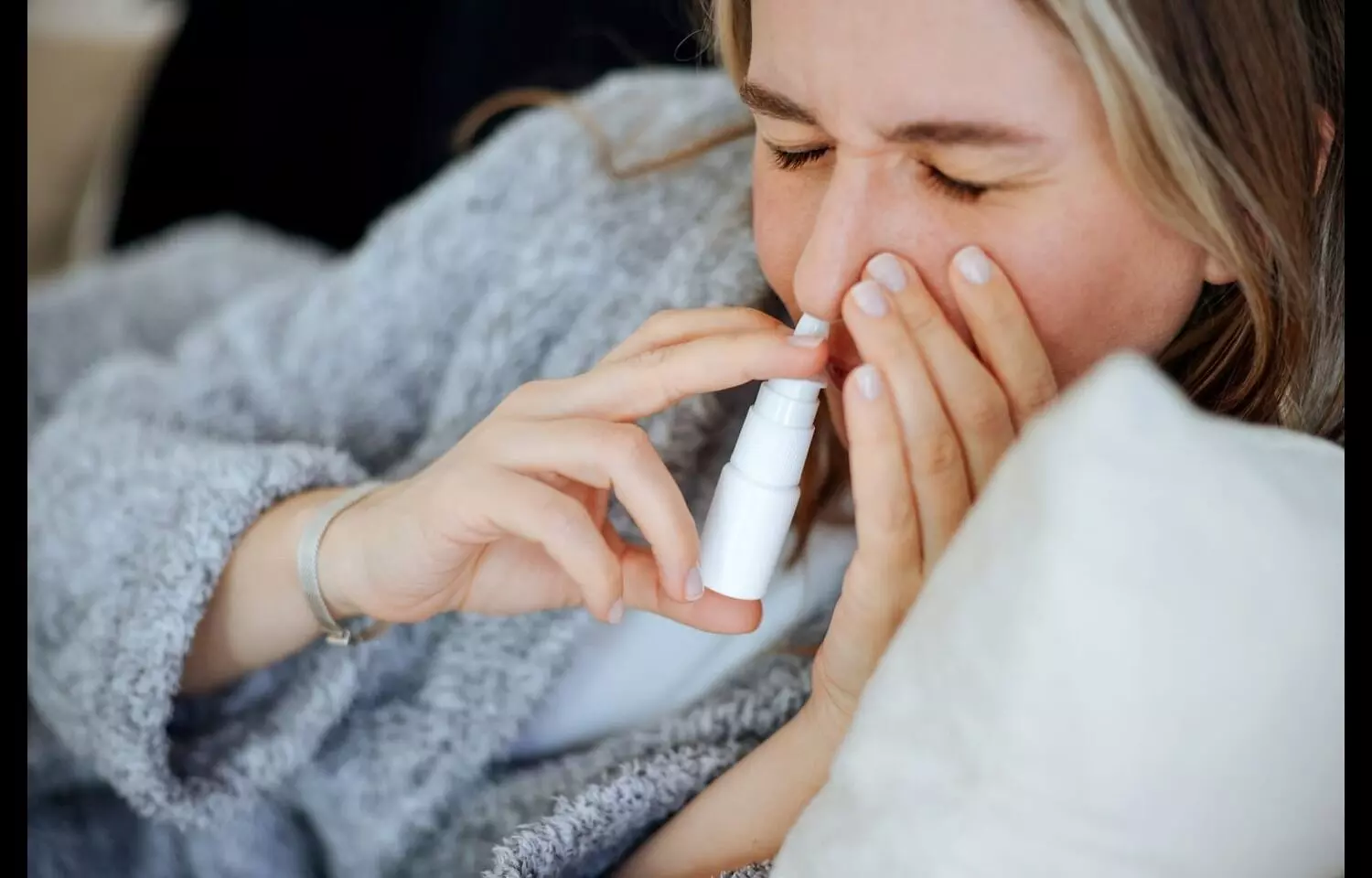3% Hypertonic Saline Nasal Irrigation Eases Allergic Rhinitis Symptoms but Not Superior to Isotonic Saline: Study
- byDoctor News Daily Team
- 10 October, 2025
- 0 Comments
- 0 Mins

A new study published in the journal ofAllergologia et immunopathologiashowed that although there was no discernible improvement over isotonic saline, 3% hypertonic saline nasal irrigation decreased nasal symptoms and antihistamine usage in individuals with allergic rhinitis. There is ongoing discussion on the relative effectiveness of 0.9% isotonic saline and 3% hypertonic saline nasal irrigation (HSNI). Thus, this study evaluated the effectiveness of HSNI as a therapeutic strategy for both adults and children with AR. From the beginning until May 8, 2024, a comprehensive search of Scopus, PubMed, and Cochrane Central was conducted to find randomized controlled trials (RCTs) that compared 3% HSNI with control. Antihistamine usage and overall nasal symptom ratings were the main outcomes. They used a random effects model to pool mean differences and odds ratios (OR) with 95% CI, and they used I2 to measure heterogeneity. The inclusion criteria were satisfied by 9 RCTs with 645 patients. The follow-up period was 4 weeks to 2 months. Adults were 35.49 years old on average, while children were 9.3 years old. In both adults (MD = −2.09; 95% CI: −3.86 to −0.33; P = 0.02; I2 = 97%) and children (MD = −0.97; 95% CI: −1.51 to −0.44; P = 0.0004; I2 = 42%), HSNI substantially decreased nasal symptom ratings when compared to control. While there was no discernible difference between HSNI and isotonic saline alone (OR = 0.69; 95% CI: 0.41–1.16; P = 0.16; I2 = 0%), antihistamine usage was likewise lower with HSNI than control (OR = 0.39; 95% CI: 0.21–0.70; P = 0.002; I2 = 14%). Across all age categories, HSNI seems to be successful in lowering allergic rhinitis symptoms and medication use. Overall, the potential advantages of HSNI in managing AR are highlighted by this systematic review and meta-analysis, especially in terms of lowering nasal symptoms and perhaps lowering the need for antihistamines. Because HSNI is nonpharmacological and has a good safety record, it might be a useful therapy adjunct. To standardize irrigation procedures, identify ideal saline concentrations, and elucidate the function of HSNI in conjunction with traditional pharmaceutical therapies, large-scale randomized controlled studies are required in the future. Clinicians may provide AR patients a straightforward, efficient, and well-tolerated intervention to enhance their quality of life by honing nasal irrigation techniques. Singh, N., Singh, S., Sharma, A. K., Singh, U., Bhatnagar, V., & Singh, V. (2025). Efficacy of hypertonic saline nasal irrigation in allergic rhinitis: A systematic review and meta-analysis. Allergologia et Immunopathologia, 53(5), 164–178.https://doi.org/10.15586/aei.v53i5.1409
Disclaimer: This website is designed for healthcare professionals and serves solely for informational purposes.
The content provided should not be interpreted as medical advice, diagnosis, treatment recommendations, prescriptions, or endorsements of specific medical practices. It is not a replacement for professional medical consultation or the expertise of a licensed healthcare provider.
Given the ever-evolving nature of medical science, we strive to keep our information accurate and up to date. However, we do not guarantee the completeness or accuracy of the content.
If you come across any inconsistencies, please reach out to us at
admin@doctornewsdaily.com.
We do not support or endorse medical opinions, treatments, or recommendations that contradict the advice of qualified healthcare professionals.
By using this website, you agree to our
Terms of Use,
Privacy Policy, and
Advertisement Policy.
For further details, please review our
Full Disclaimer.
Recent News
Torrent Pharma Receives SEC Approval to Market Alo...
- 23 October, 2025
Immunotherapy after surgery shows potential in pre...
- 22 October, 2025
NMC approves 2,337 new PG medical seats for NEET P...
- 22 October, 2025
Daily Newsletter
Get all the top stories from Blogs to keep track.


0 Comments
Post a comment
No comments yet. Be the first to comment!